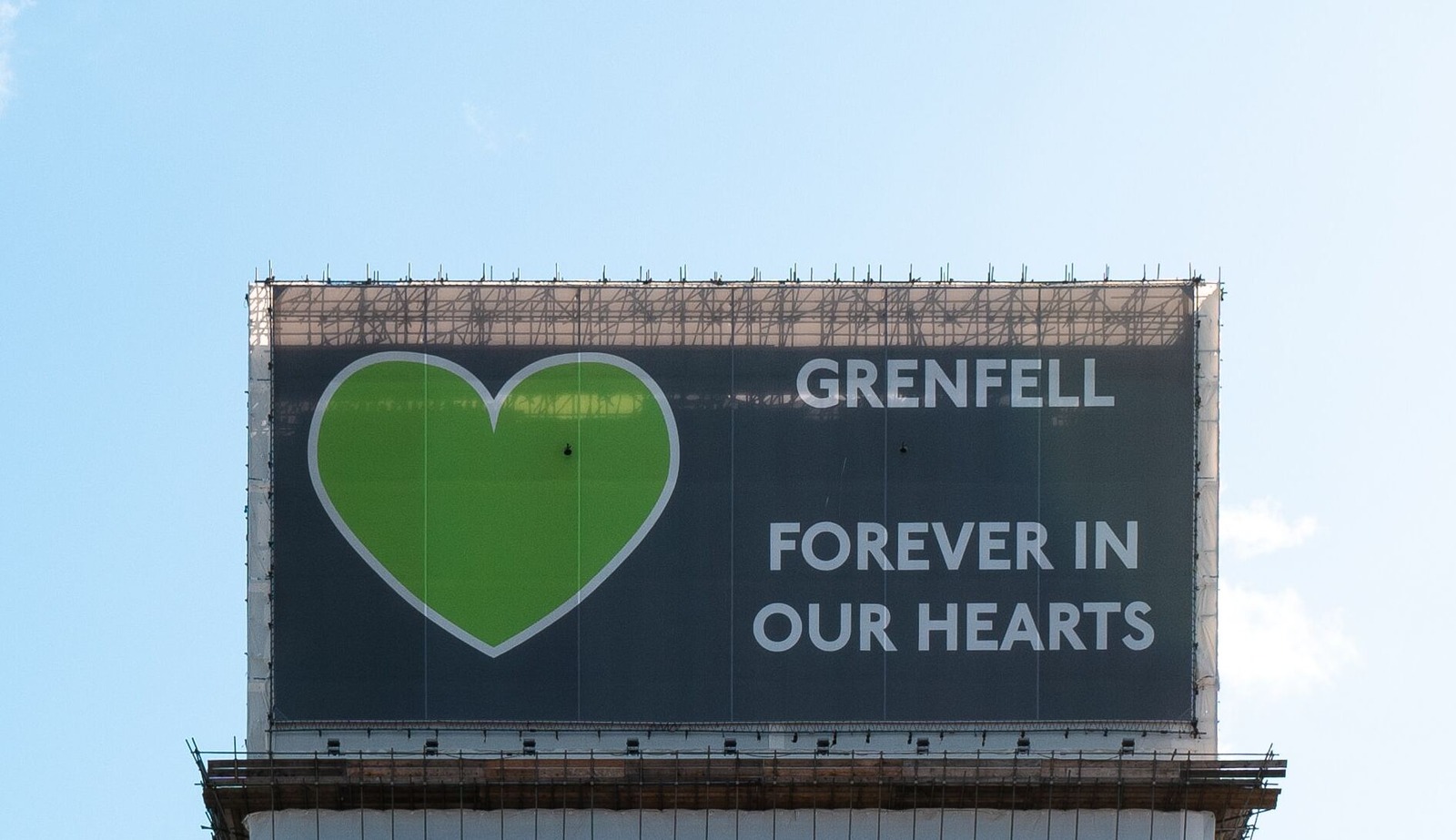Making sense of the mess: Fire Investigation at Cranfield
16/05/2023

In the immediate aftermath of the Grenfell Tower tragedy in which 72 people died, there was – understandably – a need to find out how the fire started, and why it spread so far and so quickly.
As a full-time practising fire and crime scene investigator, I was just one of hundreds of experts brought in to help search the site and try to find answers to these questions. Even for someone who’s done as much as I have in my career and seen the things I’ve seen, it was impactive, and I still get emotional thinking about it sometimes.
But as with all the cases I’ve worked on over the years, I am immensely proud to have been part of the process of finding answers for victims’ families, to hopefully ensure such a tragedy never happens again.
The search for truth and justice is something that runs throughout all our courses in Cranfield Forensic Institute, including the fire investigation MSc modules I lead. We aim to equip students with the investigative mindset, the will to work hard, and the desire to see results.
Expounding the myths
There is a common misconception that fire destroys everything it touches, including evidence of crime. Of course, fire is devastating – and it does destroy a lot – but, in the process of doing so, it creates its own evidence that investigators like me can use to piece together a sense of what took place.
In any fire, there are burn patterns. Some objects subjected to the flames will be burned more on one side than another. By comparing all these objects, we can start to pin down the direction the fire came from and therefore the area in which we think it may have originated.
Once we have established this, we look for potential sources of ignition in that area, working through each methodically to try to determine if it might have been involved, or to exclude it as a potential cause. If we think from the burn patterns that an accelerant such as petrol or white spirit has been used, we use ignitable liquid detection dogs to provide further intelligence and then confirm the presence of the ignitable liquid using laboratory analysis by taking samples from the scene.
Sometimes you find that evidence has been protected by the way in which the fire has taken hold. For example, a picture might fall off the wall early on during a fire because the string it is held up with burns through. Wherever it falls, that picture will protect whatever is underneath it from the flames. So, as a fire investigator, you could lift up something like a picture that’s absolutely burned to a crisp and underneath is pristine carpet with blood or a footwear mark on it.
One of the things that has always appealed to me about fire investigation is the variety. Each fire is unique and poses its own challenges to an investigator. We gather witness statements, review CCTV, look at lab results, and cross-check everything we find at the scene with the other available evidence to help confirm our deductions.
The fact that most of the evidence has been destroyed means you have to work even harder to get a result, and in difficult circumstances where everything is covered in ash and fire debris. Recovering DNA, fingerprints and footprints such that you can get a successful conviction or exoneration isn’t easy, but these constant challenges keep the job fresh and interesting. It means there is always more to learn.
Fire investigation at Cranfield
At the moment, we’re running three modules for our MSc students focused on fire investigation. The first – Introduction to Fire Investigation – covers basic fire science and what to do at a fire scene, and includes a live burn that students have to excavate. The second – Fire Engineering – explores how different materials react to fire and what that can tell an investigator about how a fire started or spread. It starts to take a more concentrated lens on different areas of specialism within fire investigation, and includes a fire behaviour day at the Fire Service College. The final module – Fire, Explosions and their Investigation – looks in detail at marine fire investigation, air accident investigation, civil explosions, IEDs, and pyrotechnics.
In time, we hope to develop these modules into a dedicated MSc in Fire Investigation, which is badly needed in the industry. At the moment, fire investigation is something that gets added onto other things; there’s no clear career route into becoming a fire investigator.
We want to change that, and to prepare the next generation of fire investigators that are ready, willing and able to enter the field right away after graduating.
The Cranfield difference
My first experience of Cranfield University was as a Forensic Engineering and Science MSc student back in 1999/2000. What attracted me to it back then – and what has kept me involved with the university to this day – is how practical it is, and how credible that makes the teaching.
I’m not an academic; I’m a pracademic. As a student at Cranfield, you’re taught by people who have been there and actually done what you’re learning about, rather than just read a book about it.
Everyone that is involved with our fire investigation teaching brings their own practical expertise. We bring in visiting speakers who are experts in their respective fields, whether that’s marine fire investigation, aviation fire investigation, lithium battery fires, or something else.
This real-world focus is really important to us, and it is what marks our forensic courses out as different from those offered by some other institutions, where students come out not necessarily realising what working in this field involves. Real life forensics is nothing like you see on TV. If you can’t cope with blood, maggots, or the smell of decomposition and things like that, then this isn’t the career for you!
Find out more about the full MSc in Forensic Explosive and Explosion Investigation.
Categories & Tags:
Leave a comment on this post:
You might also like…
Keren Tuv: My Cranfield experience studying Renewable Energy
Hello, my name is Keren, I am from London, UK, and I am studying Renewable Energy MSc. My journey to discovering Cranfield University began when I first decided to return to academia to pursue ...
3D Metal Manufacturing in space: A look into the future
David Rico Sierra, Research Fellow in Additive Manufacturing, was recently involved in an exciting project to manufacture parts using 3D printers in space. Here he reflects on his time working with Airbus in Toulouse… ...
A Legacy of Courage: From India to Britain, Three Generations Find Their Home
My story begins with my grandfather, who plucked up the courage to travel aboard at the age of 22 and start a new life in the UK. I don’t think he would have thought that ...
Cranfield to JLR: mastering mechatronics for a dream career
My name is Jerin Tom, and in 2023 I graduated from Cranfield with an MSc in Automotive Mechatronics. Originally from India, I've always been fascinated by the world of automobiles. Why Cranfield and the ...
Bringing the vision of advanced air mobility closer to reality
Experts at Cranfield University led by Professor Antonios Tsourdos, Head of the Autonomous and Cyber-Physical Systems Centre, are part of the Air Mobility Ecosystem Consortium (AMEC), which aims to demonstrate the commercial and operational ...
Using grey literature in your research: A short guide
As you research and write your thesis, you might come across, or be looking for, ‘grey literature’. This is quite simply material that is either unpublished, or published but not in a commercial form. Types ...







